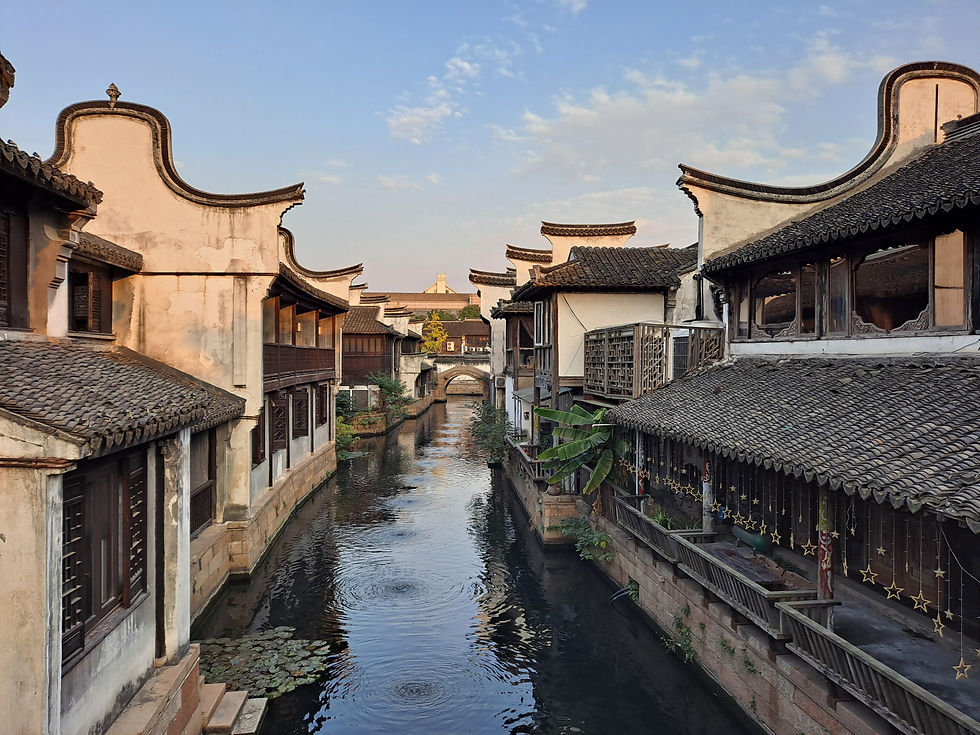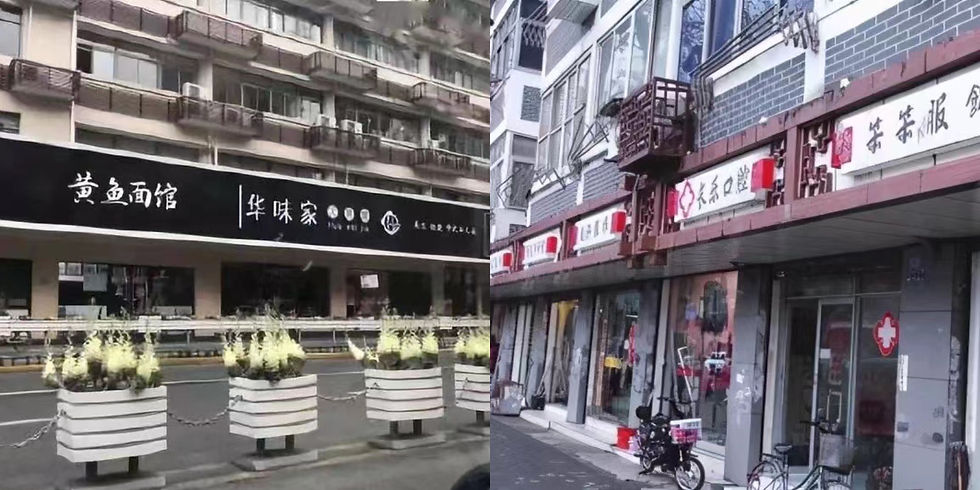Jiaxing: a traditional city facing new economical challenges
- nd356
- Feb 17, 2023
- 3 min read
In the past five years, I studied in Shanghai, California, and now Ithaca, but I spent my first 16 years in Jiaxing, where I would call my hometown, a mid-size city in the Zhejiang Province on the Southeast coast of China.

Jiaxing, traditionally known as ‘the home of silk’, is a prefecture-level city of 5.4 million people. With an area of 4,223 square kilometers, Jiaxing is surrounded by Suzhou to the north, Shanghai to the east, Hangzhou and Huzhou to the west, and Hangzhou Bay to the south. Jiaxing has a long history of producing high-quality silk and textile products benefiting from its demographic location between major trading spots like Hangzhou and Shanghai. Despite Jiaxing’s history in the production of silks, Jiaxing was never a heavily industrialized city. In my childhood as a little girl, life in Jiaxing was slow and peaceful. I used to spend my weekends hanging around in parks and old towns, where I could always find enjoyment from. At that time, I rarely meet tourists. People’s life and Jiaxing’s developments were always at a mild pace.
Things started to change in the 2010s. As Jinping Xi was elected the President of China, his emphasis on the Red Boat spirit as an essential element in his political philosophy brought attention from all over China to Jiaxing, which was also known as the birthplace of the Communist Party of China. A month after the Red Boat spirit began to be promoted in China as a zeitgeist, tourists flocked to Jiaxing, both individually and in tour groups. The Nanhu Lake, which used to be a recreational city park for locals became crowded and was filled with pupils and government officials visiting for educational or political purposes. The influx of tourists caused sequential impacts on the merchantile economy and related infrastructure constructions. The informal shop arrangements and outdated buildings surrounding South Lake were reinvested by the government. The revised structures were characterized by the extensive use of white painting and a unified model of exterior design. Although the unified decoration made by assembly line production had achieved the purpose of eliminating chaos, it has also wiped out valuable features of traditional local buildings. I believe this kind of vanity project for short-term gain is detrimental to the environment and to long-term economic activities. From my personal experience, the same store design makes it difficult for customers to distinguish desirable stores, and therefore, failed to get the goods or services they desired. Besides, the uniform building blocks cannot arouse aesthetic resonance at all. To be specific, the uniform design of black and white is easy to cause aesthetic fatigue. Moreover, to save money, the quality and maintenance of the decoration are generally poor. The white exterior wall with high maintenance difficulties is destined to be abandoned due to its unsustainable characteristics and high maintenance cost, leading to the re-exposure of the "chaotic" nature of the shops.

The promotion of Red Boat Spirit not only attracted tourists but also investments. Located in the Yangtze River Delta, Jiaxing has extremely convenient transportation connections with Shanghai, Hangzhou, and other metropolises. Yet in contrast to this easy commute, housing prices in Jiaxing are less than a tenth of those in Shanghai. In this case, Jiaxing was discovered to be an excellent location for real estate speculation. A large number of Shanghai households and investors flocked to Jiaxing's real estate market for property investment and private purchase. The influx of capital resulted in rapid growth in Jiaxing’s housing prices. Take my parent’s house as an example, the price grew from about 9000 RMB/m2 to about 30000 RMB/m2 within five years from 2016 to 2021, which was three times the average growth rate of housing prices in China (7.7%). The unexpected boost in housing prices significantly discouraged local purchase of houses, since while the housing prices doubled or even tripled for some types of apartments, the average income for the majority of Jiaxing residents doesn’t improve significantly. Young people who were expecting to purchase their first property in their thirties in Jiaxing had to carry an extra 20 years mortgage for the same house three months before the strike happened. The lack of significant pillar industry at this time became the problem of Jiaxing. Due to the pressure of housing prices, more young laborers choose to leave Jiaxing for employment opportunities in surrounding metropolises that pay a decent salary to support the housing costs.
After all, Jiaxing is a beautiful city, which carries my childhood memory and hundred years of history of the Jiangnan Region. Jiaxing is experiencing a transforming stage in its economic development, and I have faith in my city. Since the local government is taking an active role in exploring the best way for Jiaxing's urban development, I believe it wouldn't take too long for me to meet a developed and organized Jiaxing with healthy economic structure and beautiful urban layout.



Comments